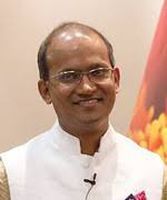
VS: What inspired you to write this book “Right Brain Approach in Homeopathy”?
DC: A few years ago, in my book, “Scientifically Intuitive Case Witnessing Process” I wrote about systematic scientific steps that enable you to become intuitive in your case taking process. This book was very well received in 30+ countries.
Then I decided to write a second book based on the scientifically intuitive case witnessing process in difficult conditions like non-verbal children, and cases with psychiatric, degenerative diseases, cancer, old age, re-assessment, organ transplant, and people who are stuck in their strong belief system.
I completed writing, the book was ready to go the printer, and then life intervened! I was in Croatia, quite in the middle of a wonderful seminar, when a clot appeared in my heart. After hospitalization and treatment, I was advised rest for six months.
In this break from my routine, I did a lot of self-reflection. Before the heart event, for the last 17 years, I had done a systematic journey of case taking, and homeopathic teaching. Now, I was on a six-month break and I could take a walk alone on the beach and spend my blissful time alone.
I realized that as a sincere student of homeopathy, everything I had ever spoken, was coming from my logical brain. This was even more pronounced when I gave my case to other senior homeopaths so they could treat me. I gave all information, the strange, rare, and peculiar symptoms, but it was nothing more than the language that I had learned in the materia medica.
I had received treatments, but it barely scratched the surface. Then, with my opportunity to spend some time alone in my blissful space, a lot of natural things welled up in my mind, and all of that was totally spontaneous, and that truly surprised me.
In this alone time, I re-discovered my imaginary friend who was a part of my life till I turned 24 tears old. As the memory of this imaginary friend revived, I also remembered a part of my childhood that I had spent in my grandmother’s house. From a logical person, I had now become a spontaneous person.
Similarly, we all have two parts in us. One is the learned, logical, and systematic part, which is changeable and which we have gathered from our age, different stages and situations of life, and also from our subconscious and conscious mind.
Then there is a part which is natural, and spontaneous. It does not change with age, upbringing, learning, and with conscious and subconscious mind. Everywhere it remains the same. I asked myself a question, can I create a space where this learned brain recedes to the background, and this natural spontaneous part of me can come up on the surface? Expression of the natural and spontaneous part would be able to elicit true peculiar symptoms and a collective whole can come up on the surface.
This question led me to a deep search, ideas and inspiration poured in to my personal, natural space where I could make my left logical brain less intense and make it almost asleep, and let the right brain take lead. This research and experimentation of the past two years is presented in my book, “The Right Brain Approach In Homeopathy”.
VS: So, your personal experience or setback in health made you question the whole paradigm that you were living and inspired you to ask,‘What am I doing?,’ that gave inspiration for this book?
DC: Yes, my latest book is my effort to put in the hands of all homeopaths a tool that can unlock the natural, the spontaneous aspects of our right brain. This book will not only make a difference in their own life and the way they look at things, it will also help them see their patients with more clarity and elicit right-brain aspects in routine as well as difficult to tackle cases.
VS: In the book, you have brought up an analogy early on about two travelers in a car as a metaphor to make your point. How does this visual image support you to make a thesis for your book?
DC: Imagine your life is a holistic car and there are two travelers – one is a learned logical man who has learned from life experience, age, system, religion all that he has gone through, a kind of Wikipedia brain, and one which is a natural, spontaneous, heart-centered, individualistic traveler.
Now both are sitting in that car, and logic says, the one who is learned and systematic should drive the car and that has been happening all the time. All our decisions are made by the left brain, the right brain is just there doing nothing. The right wants to express itself, be spontaneous, be heart-centered, but the left brain dominates over the right brain.
Now imagine for a moment, that the heart-centered right brain can take the lead – this would be a unique situation. The right has found his heart’s journey, the left has found the logic and intellect, and the two begin to complement each other. This is when the life’s journey becomes holistic.
In a homeopathic journey, if I am guided by my spontaneous, natural right brain, but while searching for the symptoms, reading the philosophy, materia medica and repertories I am guided by the logical and scientific left brain, my end-result will be more holistic and complete.
VS: When a new style of case taking becomes available, students and practitioners try to emulate it in their own practice. But we must have a thorough grounding in classical homeopathy before becoming adept at using this new tool, right?
DC: Yes, this is where both come together, complement each other and both go on two parallel tracks of homeopathy. I was talking to Dr. Michael Yakir, and a beautiful analogy came up during that conversation. There are two ways to build a castle. One way is you start at the bottom, build the foundation, then the floor, the pillars and so on. and the other way is designing a castle from the dome.
We talked about which method is right. We came to a beautiful conclusion that both are right -those who have started with base/pillar they just need to build a dome on it (a castle close to their heart, close to their individuality); those who have started from the imaginary castle they just need to place pillars and foundation underneath so their castle could become strong. This analogy is perfect.
VS: You have dipped into Indian mythology. Tell us, how do you use that aspect of our culture to speak about your work.
DC: Many years ago, inspired by one of my teachers, I began exploring mythology to make sense of the times we live in. Since then, I began using parallel science, philosophy, mythology, and alternative science to understand the science of homeopathy. Mythology is a time-tested expression of truth about life. Homeopathy is about life.
For example, if I must explain how homoeopathy includes the sciences and the arts, I draw upon the story of Saraswati, the goddess of knowledge in the Indian mythology. She holds a book in one hand (systematic, logical knowledge based on science). In another hand, she holds Veena, a musical stringed instrument. She represents both the science, and the art. A true knowledge is a combination of the arts and the sciences.
Looking back on Indian civilization, it has had two parallel streams. Ganges civilization along the river Ganga and Yamuna civilization along the river Yamuna. Ganga represents a masculine civilization and Yamuna represents an artistic and emotional civilization, for example, the love story of Radha and Krishna that unfolded along the Yamuna river; and Taj Mahal, an eternal shrine built by Shah Jehan to memorialize his love for his queen Mumtaj.
Our ancient scriptures say that Ganga and Yamuna meet at a mythical place where the river Saraswati is. Saraswati is thus an amalgam of the masculine and feminine, the science and the art. These insights encouraged me to use mythology liberally in my book. Homeopathy suggests a way of life based on natural laws. Many ancient civilizations had a deep understanding of such natural laws.
VS: Let’s to go to the nitty – gritty of the right brain book now – so that students of homeopathy will understand your work better.
DC: Before writing the book on the right brain approach, I had done an extensive look back on over 17,000 cases that I had seen in my practice. I saw that I had my fair share of failures. In these failed cases, I was completely convinced about my process of case taking and remedy choice, so what led to failure in these cases?
When I look back to failed cases, I saw failure was in those cases where I was totally convinced with the process of case taking. So how is that possible? As it turned out, these were the cases of totally left-brain people. They had given me all the right answers from their intellectual, logical left brain and they took my remedy, and nothing happened. Then I realized that they had successfully shut down their right brain.
Going forward, in my case taking, I continued doing the three steps: Giving an open space where I am passive, and when patient is not able to go further, I guide them into subconscious areas like dreams, imaginations, fears, childhood illnesses, peculiar things.
This is my logical system, the 1st system. At this point, I will add one or two more methods which are spontaneous – based on either a hint given by the patient, or I prepare/add those questions where logic does not come but answers come in the moment, naturally. Both the patient and I are not prepared for what will come up.
I check to make sure that the symptoms are there in the spontaneous part as well as in the system case taking part, the true peculiar symptoms and that it is not popping up from the left brain.
This peculiar symptom comes from the core of the patient. Now I step into the 2nd part of case-taking where I actively confirm the patient’s core. I start confirming symptoms through the right brain questions because that will take us to spontaneous and non- logical answers.
Once I become sure of patient’s core, I begin the “active-active’’- 3rd part of case taking, and with that method and characteristics I keep asking about the whole process. At this point, all peculiar symptoms come together in a single beautiful pattern. In my book there are 13 major methods, and 10-12 additional methods for exploring and unlocking the right brain.
VS: Do you need to use all 13 main and 10-12 ancillary methods for unlocking the right brain in one case?
DC: No. The 1st part of the case will give me a clue about which of the right brain approaches will suit the patient. We need not use all methods in every case.
VS: So, when we work with the patient, we need to have a sense of what will suit them at an individual level.
DC: Exactly, the whole book is designed that way. From the available menu, you can select 1-2 methods that suit the patient, and that will help you open the case.
VS: How do you integrate this right brain approach in the day-to-day grind of a busy practice? Also, during the current pandemic, people are struggling to get better from their acutes. How do you fit this very refined approach to acute situations?
DC: A person is going through the pandemic -a kind of collective conscious disease at a mental level as well as at the viral level. I ask simple physicals like what are you going through, mentally, what are the changes and then I give them the remedy, right?
But within those 5-10 minutes I tell them, close your eyes, and keep your pandemic collective remote virus space in front of your eyes and see what you are going through, see the 1st image appearing in front of your eyes, not with the logical brain but see what comes naturally, and talk about it.
My 2nd question to them would be: Make a natural story of what you are going through, start writing and see what comes up. The 3rd question would be: Imagine as if you are going through Covid, imagine the worst extreme, and see where your mind.
Tell me what comes 1st, the whole picture, and feeling about it; draw your 1st abstract crazy picture of what you are going through. Drop your logic. These are 4 examples. I can give you about 50 pandemic-related questions. These will cut you free from the logic of the pandemic and take you into the individual self in just 5-10 minutes. It is super easy.
Even while facing the collective conscious disease, the individualistic characteristics will come up. As Hahnemann found out, individualization is very hard to suppress or ignore.
VS: So, this little girl Khumari, she is in your book from the very beginning. Is she your childhood sweetheart who played with you when you were a little boy in your grandmother’s house?
DC: Khumari is my imaginary childhood friend. In my book, Scientifically Intuitive Case Witnessing Process, I have a character, Oompho. He is like an Indian spiritual guru. He belonged in the book that was based on system and then intuition. The right brain book needed a character that is feminine, intuitive, spontaneous, natural… so I chose Khumari.
Poet saint Kabir uses the word Khumari to describe a spiritual drunken state. It’s a state in which, you can have Buddha-like inner calmnessI also contemplated the character of Meera. As a devotee, she was in love with Krishna. Both these characters have a system and spontaneity, love of the heart-centered path, and the intellectual courage to walk on it.
They blend the two, and that is exactly what I have done in my book. And when you go in that state, the blissful Khumari state with your patient, you become a Sufi in trance, and attain a state of spiritual drunkenness…the state of Khumari as Saint poet Kabir calls it. Everybody’s guards are down. We are all in that spontaneous, natural, right brain state.
VS: Are there any special types of patients who are better suited to the right-brain approach?
DC: In the last five years, I saw over 5000 very logical, systematic, learned, left-brain dominated people. For example, homeopaths, regular doctors, engineers, workaholics, basically, very left-brain people with very strong belief systems.
Then there are people who have made up their mind about something and that cannot be changed. It also works great for teenagers who do not like to talk. Also, people who talk only on the fact level and never try to give a deeper answer.
The right brain method is very suitable for these cases where we give up and say, nothing can be done. I say, do not give up, let us explore together what your right brain has to say…they are not prepared for such an exploration and the results are simply fantastic.
VS: Could you share a small a case that summarizes your work and highlights the book Right-brain approach in Homeopathy?
DC: I saw a teenager from a well-educated family who had attempted suicide twice. He became depressed and stopped leaving his room. When he came to me, I did a passive case taking in an open space. He could talk freely to me and I just listened passively.
He said that because of his IQ his ability to think has become reduced. He admitted to his love for reading novels. Unlike his previous homeopaths, I did not touch his chief complaint – depression and suicide attempts. We talked about his hobbies and interests. He said again that even during his examinations, he read novels. If he reads novels, he does better in his exams.
In his 7th grade, he had written a 660-page novel with his friend but never published it. I observed that while talking about his novel, he came alive, but otherwise he was rather very depressed, and did not want to talk to me at all.
Now, I had 2 choices; the first being, I do a natural case taking of going into chief complaint, zoom in and ask – what do you feel, what do you perceive, what do you sense, how do you react. The second choice is, I am getting a clue about his interest in reading novels, writing novels. I chose to make that second option as my base, and I asked him – “If I tell you to write one novel with you being the central character what you will write?”
He said, it would be a super-hero novel. His super-hero has a fixed weakness. He is searching an answer to come out of his weakness.
I asked him to be with this story, see what else comes up. He said the super-hero has a weakness for one particular very rare mineral. It is found in only one country in Africa, and it has a phosphorescent nature. He then names it radium.
His super-hero is searching for radium. Once he finds radium, he gets his powers back and he fights the enemy. The whole book is about how he overcomes his weakness. He further says that the novel has an epilogue: the villain is not dead. So, I told him to keep himself in the center and write one more story
He said he would. His super-hero locates a solution containing radium in a lab in Germany, drinks that solution, he gets his strength back and kills the villain. After writing this epilogue, the story ended.
I asked him to be with this story one more time and see what comes up. Again, he said he would, and he wrote about a boy with high IQ and low ability to think, and the boy has a weakness that he overcomes.
I gave him a designer diary – something I give to all my patients. I asked him to write an essence of his novel in it once every 15 days. The center of his case is a novel. So, through the novel I can draw out all his PQRS symptoms … he does not have to answer any questions regarding symptoms and his diagnosis.
All he must do is write spontaneously in his alone, blissful state, and see what comes up. In his subsequent entries, the need for radium is becoming less and less, and the superhero is becoming better and stronger. Through novel writing, the boy found his healing, dropped his suicidal ideations and, came out of depression and got his life back.
He became a general secretary and a storyteller in his college, and I encouraged him to write rapidly, once every month, whatever comes up, write, write, write without thinking. This writing helped him for bringing out all that he goes through, in an abstract style novel. It helped him see what is happening. It also helped me see what is coming up for him. This rapid writing from right brain became his next step in healing along with his simillimum.
He guided me with the storytelling area during the case-taking journey and then I picked up one method based on his center of novel writing – A Rapid Writing Method from the book. This unique method helped him express his state, see his state better as well as to see what comes up once he has improved. The method enabled him to keep himself in focus and observe the changes. He recovered well and is free from disease.
VS: What a success story to share and it also showcases the book you have written and the various tools that are available that can be used in the right-brain approach.
DC: With the tools and techniques described in the right brain approach book, we did not even have to touch his painful side – depression and suicide attempts. I see this book as a gift to homeopaths as well as the patients. After my health setback, I had started a deep process of self-reflection to understand who I am. That was the beginning of my own healing journey. The tools that I have described in the right brain book will jumpstart the healing journey of patients as well as the practitioners. That is the beauty of these right-brain tools.
As you do those methods you learn about which one of the 25 methods suit you and your patients best. You learn to explore your personal and professional space, your alone blissful space, you see what you are going through, what are your own individual characteristics, and you can find your original unmodified design through your heart’s path, through the right-brain approach.
VS: Thank you Dr. Dinesh.
A message from Dr. Dinesh to the homeopaths located far and wide, of every school of thought, and persuasions:
In a two-dimensional world, there is cause and effect, there are questions and answers. In my book, Scientifically Intuitive Case Witnessing Process, I introduced you to a third dimension: a character that is trying to balance the black and white logical with the intuitive flow, the artistic or the right-brain flow.
In the current book, “The Right Brain Approach in Homeopathy” I am taking you further along and initiating you in methods that you can master and apply in case witnessing with acute situations, children, adults, and just about anyone who seeks homeopathy.
The beauty of these methods is that they are also useful for you. You can apply these methods in your own life and see yourself for the very first time, from another, deeper and richer perspective. You can choose a right brain method that works well for you and use it daily, or biweekly or once a month and find yourself in a very personal and private “blissful space” in your own life.
I call it as “Do it yourself” or DIY in short. There is one method of rapid writing – where you can pen down your words without thinking, without a stop, very, very rapidly. In the dark space method, you sit in your space, close your eyes, visualize an empty dark space, and see what comes up. Each method has 10-30 questions that you can apply in your own life.
As you progress further along, in this right brain approach, you will discover your own characteristics that were hidden from you in plain sight! Out of the menu of 25 methods, you will resonate with those that fit you the best, that you can use with your patients, in your personal and professional space, in your very own, alone, blissful space, and see what you are going through, who you are, and what are your unique characteristics that enable you to find your original, unmodified design, your inner pattern, and your heart’s path. This method could become a gift to yourself and your patients.
At the very outset, I had shared how I first began seeing my own self using the right brain methods, learning who am I really, before and after the right-brain based explorations of myself, and I am beyond belief convinced that in your skilled hands, the right-brain based methods will become a unique and highly cherished gift for you and your patients as you will come to encounter the rich tapestry of your inner true selves.
Best wishes and thank you.
Dr. Dinesh Chauhan.

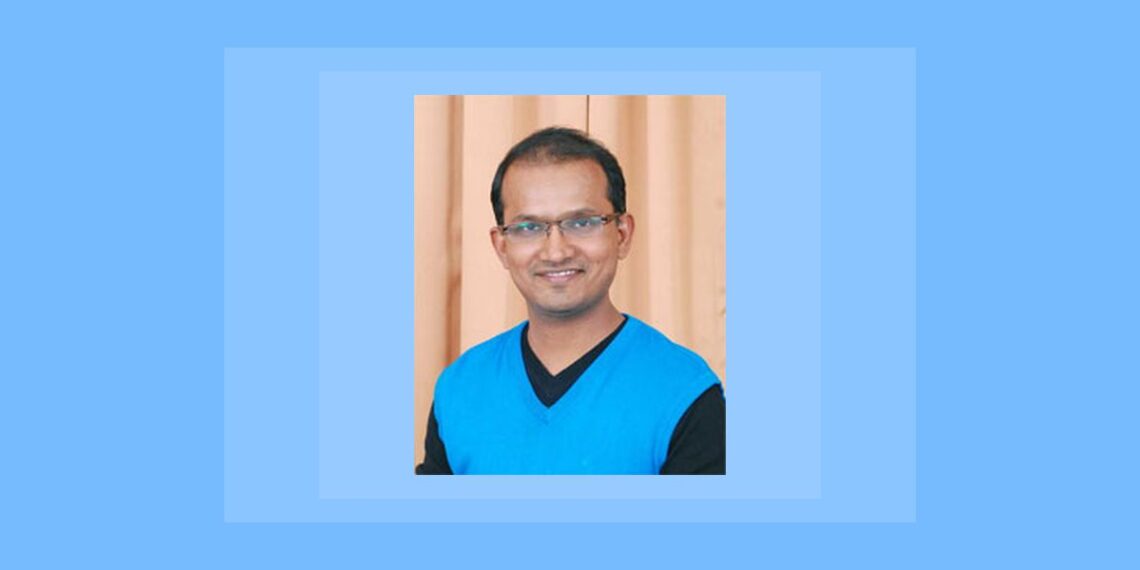
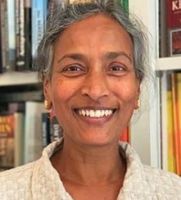
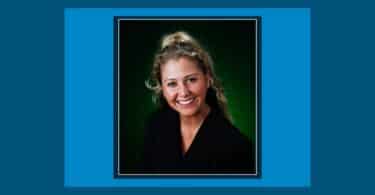
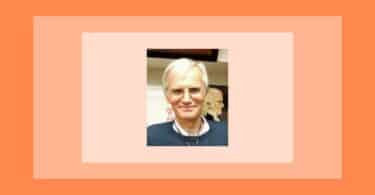


How can I receive a copy of this book?
Thank you Dr Dinesh Chauhan for coming up with this precious & very unique book “Right brain approach in Homeopathy”.
A gift to humanity & homeopaths.
Thank you Dr Vatsala for doing very informative book review, unfolding several aspects of the book. This is very helpful.
I enjoyed that. Thank you Vatsala for your in-depth interviews that help us explore so many new ideas.